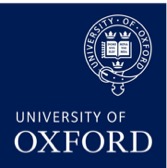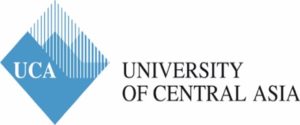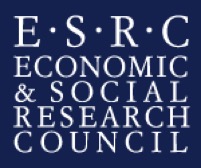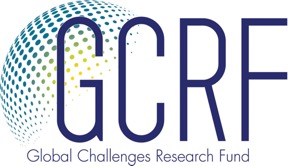Adequate compensation for relocated herders
By Chuka Chuluunbat
For Mongolian herders, winter camps are crucial for the survival of their livestock. In 2004, about 16 families’ winter camps in Khanbogd soum, South Gobi province, were affected by the Oyu Tolgoi mega mine. The mining company initiated a relocation of affected winter camps. As a form of compensation the company built wooden sheds, animal enclosures and dug wells for water. Such compensation is important for herders’ lives, as they lose important sacred sites, water sources and pasture as part of the mining process. This is an issue across the Mongolian countryside beyond only the Oyu Tolgoi Site. Oyu Tolgoi has gotten a lot of attention over the years; it is necessary to look at how these issues play out in other areas of the country. According to the Mongolian Mineral Resources and Petroleum Authority, as of 2019 Mongolia has 1840 mining companies operating. How each mining company settles disputes is different depending on their scope, governance, financing mechanisms and the business practices of the investing country.
In 2011 the Oyu Tolgoi mine expanded, and more herders were affected. Infrastructure such as road construction, a new airport, a large water pipeline and power lines were constructed and set up. Many herders believe that these changes caused pasture fragmentation, increased dust volume and affected well water levels. Some dissatisfied herders founded a local NGO called “Gobi Soil”, which is currently led by a local leader named Battsengel. With the help of a national NGO, “OT Watch,” they filed a complaint to the CAO, the international ombudsman associated with IFC lending as part of the World Bank. The complaint questioned whether adequate compensation was given to the affected herders. This created a situation which led the interested parties beginning to negotiate. This process began with herders and the company; later the local government joined. This led to the creation of what is now known as the Tripartite Committee (TPC). The committee reviewed herders’ compensation claims and complaints related to loss of water and pasture. To do this the TPC engaged independent experts. Recommendations addressed socio-economic and environmental issues. Outcomes included a review of past compensation and issues of collective compensation and a landmark agreement was reached. The goal is sustainable herders’ livelihoods, including herders’ market, veterinarian clinic, meat processing factory and growing animal fodder. The Oyu Tolgoi mine has been reviewing old claims and awarding compensation. They do have rules and regulations created by Rio Tinto and IFC that they are following including standards of transparency. They created affected zones and did resettlement accordingly (this information is publically accessible on the OT website- http://ot.mn/operation-management-plans/). The TPC is a novel approach to conflict resolution issues and we are studying how a similar approach might be used elsewhere in Mongolia and Central Asia.
As stated early, more than 1800 mining companies are currently operating in Mongolia. My colleagues from the Gobi Framework project recently conducted fieldwork in the adjacent Gurvantes soum where the population is very sparse. There are many companies working in this area- some Mongolian companies, some from other countries. Up to seven or eight family’s land could lie within the licensed area of a mining company. In Gurvantes, depending on the negotiation skills of the herders, the size of compensation differs. It should not be like this where an argumentative person receives more compensation, whereas a humble and quiet person could be left with no compensation at all. This itself is creating an unjust system. It is unclear what the other thousands of mining companies operating in Mongolian are doing. In the Law on Mining it states that the herder families who happen to be on the territory falling within the licensed area will be awarded compensation. There is a complete absence of methodology or standards on how to assess and award compensation. That is left to the company’s discretion. What about small and medium gold mining companies operating all over Mongolia? Are they creating any impact zones at all? Are they even awarding compensation to the local people? It is currently not possible to find data on how mines determine compensation to locals.
In the Mongolian language term the term ‘нөхөх олговор’ is being used for compensation. How does this term match the English term? It is time to examine that carefully too. Also one other meaning in Mongolian is ‘to patch up’. The question is what forms of compensation should mines give to herders? Is it a question about providing money to the family to live on for a few years? Or is it a question of providing sustainable livelihood to the affected herders? We must examine that. Usually x amount of cash given to the herding family as compensation is quickly used up and then that family struggles further to sustain their livelihood. They move from their homeland and face relocation due to mining activity. When such family moves somewhere else, builds a winter camp and settles down there, other herders may label them as people who sold their homeland for profit and that bad name is permanently stuck to them. They get ostracized during such period and eventually they get pushed out and are forced to move to soum centre. We can observe such patterns playing out across Mongolia. This question must be taken out and examined in detail in its comprehensiveness.
Complaint resolution is a work in progress. With time new issues arise and need to be managed in an open and transparent way. Decsions made by companies about compensation should be made open and transparent, otherwise there is no clear standard. Local people would have a rough idea to what amount of compensation they are entitled to, also projects for sustainable livelihood of affected herders will be run as part of company company’s CSR. Openness, transparency and cooperation with local people could be the best solution to conflict resolution. That should be regulated by the legislation of concerned Ministries and methodologies should be introduced to and implemented in Mongolia as soon as possible. In my observation such actions could contribute, even minimally to the problem of conflict resolution.
More broadly, does the law need revising to include issues of adequate compensation for herders affected by mining? Does this case suggest that conflict mediation be expanded in Mongolia? Other points to consider include how it fits into Mongolian law, companies’ willingness to participate and ensuring community involvement.




